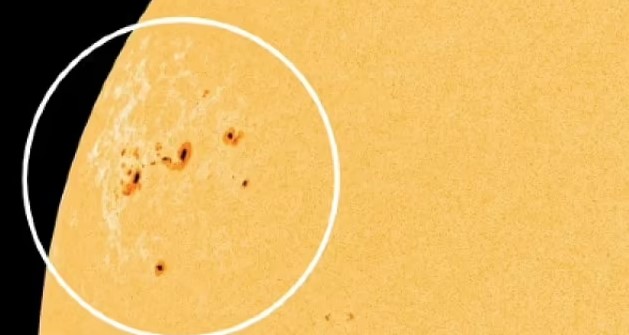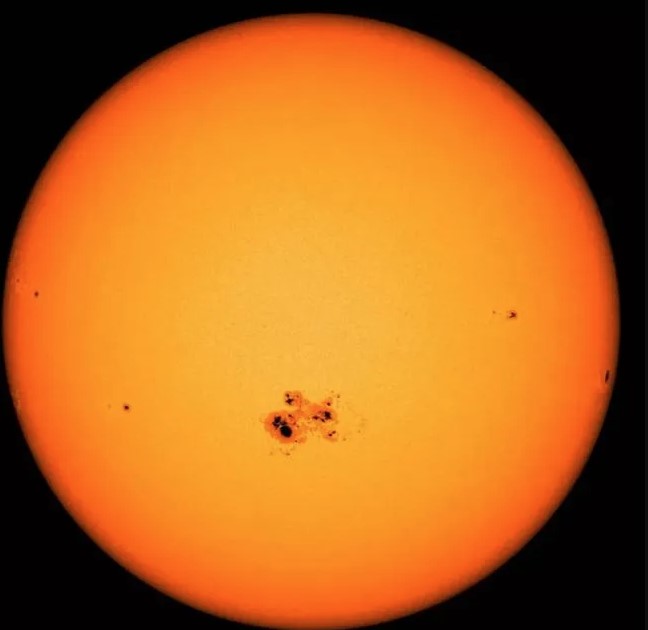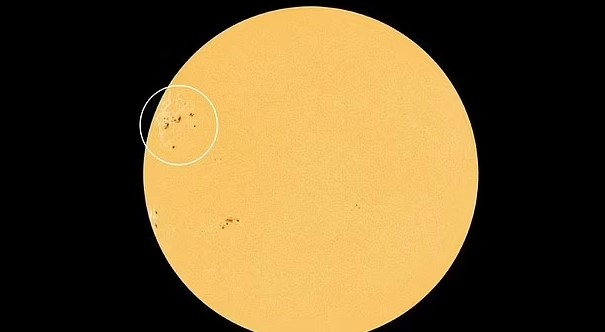Huge Sunspot Archipelago on the Sun
The Sun is adorned with dark patches called sunspots. Sunspots are cooler regions on the sun's surface that emerge due to fluctuations in its magnetic field.
The latest images from NASA's Solar Dynamics Observatory show a large cluster of sunspots, resembling an archipelago of islands on a yellow planet.

This group of sunspots is estimated to be around 120,000 miles across, making it 15 times wider than Earth. While they may seem small in the images, these sunspots are enormous.
To put the size of this sunspot archipelago into perspective, let's take a look at some numbers.
The diameter of Earth is approximately 7,917 miles, while the distance from Earth to the moon is about 238,855 miles.
This means that the Sunspot archipelago is roughly 15 times wider than Earth and over half the distance to the moon.
Scientists Warn of Potential Solar Flares
Sunspots may seem harmless, but they can have a significant impact on Earth.

These cooler areas on the sun's surface are also regions of intense magnetic activity. This activity can lead to solar flares, which are sudden bursts of energy and radiation from the sun.
Solar flares can cause geomagnetic storms, which can disrupt Earth's magnetic field and potentially damage power grids and satellites.
In extreme cases, these storms can even affect communication systems and cause blackouts.
Therefore, scientists are closely monitoring this massive sunspot archipelago for any signs of solar flares.

One of the main concerns with solar flares is their potential to cause devastating blackouts.
Power grids are vulnerable to disruptions caused by geomagnetic storms, and a large solar flare could take down power systems for extended periods.
This would not only affect our daily lives but also have a significant economic impact.
In addition, satellites play a crucial role in modern communication and navigation systems.
A solar flare could damage or destroy these satellites, causing further disruptions and financial losses.
Possible Impact on Our Planet
The potential impact of solar flares on our planet is not something to be taken lightly.
In 1859, a powerful solar storm known as the Carrington Event caused widespread disruption to telegraph systems and even started fires in some cases.

If a similar event were to occur today, the consequences could be much more severe due to our reliance on technology.
In 2012, a solar flare narrowly missed Earth, and experts say that if it had hit us, it could have caused widespread power outages and disrupted satellite communications.






